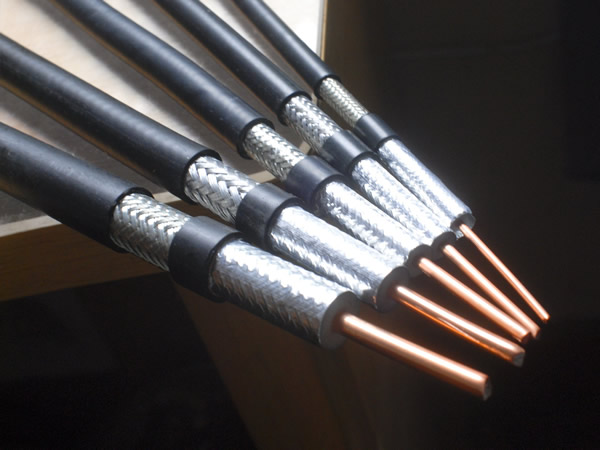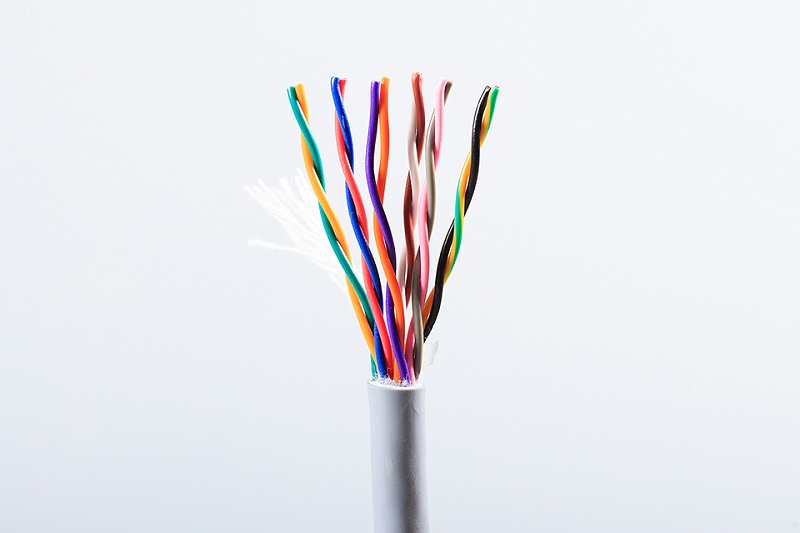
Coaxial and twisted pair transmission characteristics are specified by the national standard, and can not be changed.
Such as video signals on the side frequency of 6M, for 2000 meters transmission distance, SYWV-75-5 cable attenuation of 40db. That is the voltage attenuation 100 times, 1Vp-p 6M video signal attenuation to 10mv, or 80db microvolt.
Video recovery at this level ensures a high signal-to-noise ratio.
Engineers with experience in cable system design are well aware of this.
For unshielded twisted pair cable, 2km of 6M attenuation of 92db, attenuation of nearly 40,000 times, then 75-5 coaxial cable 52db (nearly 400 times).
The coaxial cable transmits all the electromagnetic fields of the signal inside the shield, not radiated to the outside.
According to the transceiver reversible principle, the external electromagnetic field can not pass through the shielding layer into the internal.
Coaxial cable is divided into four layers from inside to outside: the center copper wire, plastic insulator, mesh conductive layer, and wire jacket. Current is conducted through a loop formed by the center copper wire and the mesh conductive layer.
Because the center copper wire and mesh conductive layer for the coaxial relationship and so named.
Coaxial cables conduct alternating current rather than direct current, which means that the direction of the current is reversed several times per second.
If a normal wire is used to transmit high-frequency currents, this wire becomes the equivalent of an antenna transmitting a radio outward.
This effect depletes the power of the signal, which reduces the strength of the received signal.
Coaxial cables are designed to solve this problem.
The radio emitted from the center wire is isolated by a mesh conductive layer that can be grounded to control the emitted radio.

But there is a problem with coaxial cables.
If a section of the cable is crushed or twisted, the distance between the center wire and the mesh is not always the same.
This causes internal radio waves to be reflected in the source.
This effect reduces the power of the signal that can be received.
To overcome this problem, a plastic insulator is added between the center wire and the conductive mesh layer to ensure a consistent distance between them.
This also results in a cable that is relatively stiff and not easily bendable.
The coaxial interference generation principle is another matter, twisted pair cable is different, and its signal transmission electromagnetic field, is theoretically distributed in infinite space.
According to the transceiver reversible principle, the external space electromagnetic fields can also be directly into the twisted pair.
Twisted-pair cable can not prevent the entry of electromagnetic fields from the outside world, but the use of a spiral twisted approach, so that the two lines receive the signal "as far as possible the same".
And the use of balanced differential signal processing techniques, the same "common mode signal" suppression.
Here the key is the twisted pair of "balanced" characteristics.
"Balance" Once there is a difference, the interference will take advantage of the situation, and external objects will also affect the balance.
Engineering "balance" is relative, not absolute, the circuit's "common mode rejection" performance is a certain range.
These two practical problems determine the twisted pair of anti-jamming abilities, there are limits.
Integration of network cabling rules In the case of strong interference, you must use a shielded twisted-pair cable, this is the reason.
Twisted-pair cable is made of two mutually insulated wires twisted around each other according to certain specifications.
Generally clockwise winding together and made of general wiring, belonging to the information communication network transmission medium. It can reduce the degree of signal interference, a wire in the transmission process of radiation waves will be the other wire issued by the wave offset.
Twisted-pair cables were mainly used to transmit analog signals in the past, but now the same words are used for the transmission of digital signals.
Coaxial cable from the use of points can be divided into baseband coaxial cable and broadband coaxial cable, that is, network coaxial cable and video coaxial cable.
Coaxial cable is divided into two categories: 50Q baseband cable and 75Q broadband cable, and the baseband cable is divided into fine coaxial cable and coarse coaxial cable.
Baseband cables are used only for digital transmission, with data rates up to 10 Mbps.
Coaxial cables are cables that have two concentric conductors, and the conductors and the mask share the same axis.
The most common type of coaxial cable consists of copper wire conductors isolated by insulation.
The above is about the coaxial cable and twisted pair cable in the use of the difference between the structure if you have any questions about the cable or cable orders on demand, welcome to consult the ZMS cable website.